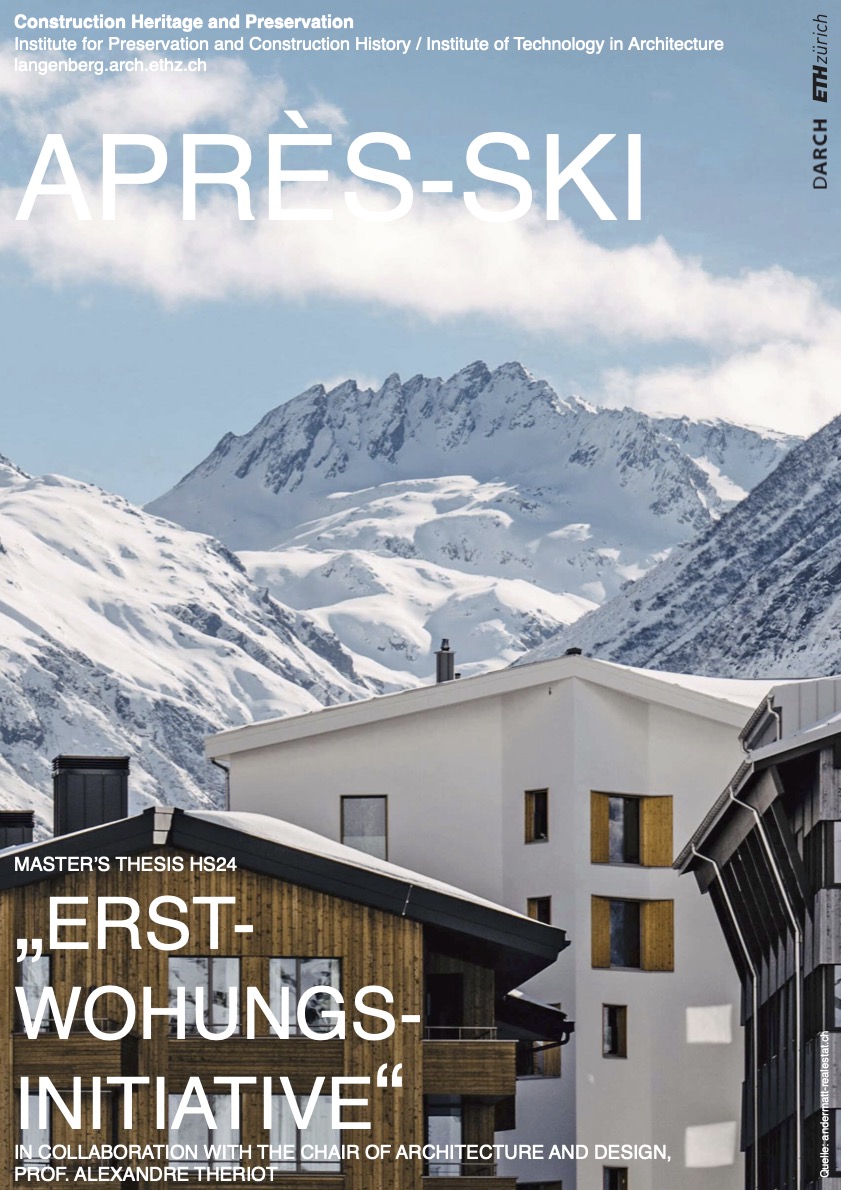
Master’s Thesis HS24
In Collaboration with Chair of Architecture and Design, Prof. Alexandre Theriot
Team: Silke Langenberg, Alexandre Theriot, Adrien Comte, Eva Ruof, Reto Wasser
What comes after the snow?
The Alps are no longer—and probably have never been—a savage natural dream. These territories are a major economic force, a refuge for global capital, a place for isolated political decision-making, and above all, a highly profitable, urbanized fun park for the whole world.
The operation of cable cars in the Swiss Alps alone has generated a turnover of 741 million Swiss francs, resulting in an added gross value of roughly 500 million in 2022. Skiing Day passes rise to above 100 CHF. At the same time, this winter season has been the mildest Swiss winter since the beginning of records.
Acknowledging that the mountains are no longer a counterworld of our cities but have become their offspring, we speculate on a functional and programmatic reinterpretation of these landscapes. With the disappearance of snow, the region will face major economic challenges and vast available building stock. New concepts of use will be needed.
Do we retract from the territories, leaving our ruins to the increasing natural catastrophes? Or do we change, transform, and develop a new habitat?
“Erstwohnungsinitiative”
The imaginary Erst-Wohnungs-Initiative is an experiment to rethink the use of the existing building stock collectively. It is a speculative proposal for a legal shift and sets the common ground for our experimental explorations.
The proposed legal shift is a radical continuation of the Zweitwohnungs-Initiative, which resulted in the national law on secondary homes (ZWG), also called Lex Weber, in 2016. Together with the Lex Koller—the federal Act on the Acquisition of Immovable Property in Switzerland by Foreign Non-Residents—the two Acts aim to regulate the influx of foreign capital into the Swiss real estate market.
The ZWG or Lex Weber generally prohibits the construction of additional secondary homes as soon as their share in a commune exceeds 20%. Due to a lack of enforcement power, it is not an absolute ban, and numbers show a different reality. In Crans Montana, just after the introduction of the Act, nearly 500 new “primary residencies” were built while the permanent population decreased significantly. In the Oberengadin or the Berner Oberland, the Act resulted in a sudden increase of primary residencies on paper linked to build structures, showing suspiciously low occupation rates.
We speculate on a different reality; one where our imaginative Erstwohnungs-Initiative effectively led to an end of rarely occupied luxury chalets and holiday complexes used only a few months of the year.
What does it take to transform a vacation resort into functional year-round spaces, providing homes instead of only beds?
Can we transform obsolete tourist infrastructures to host civic functions? Where do your children go to school or take a bus if you permanently move into a former vacation colony?
Will we suffer from a sudden retreat of foreign capital, or do we find new economic potentials?